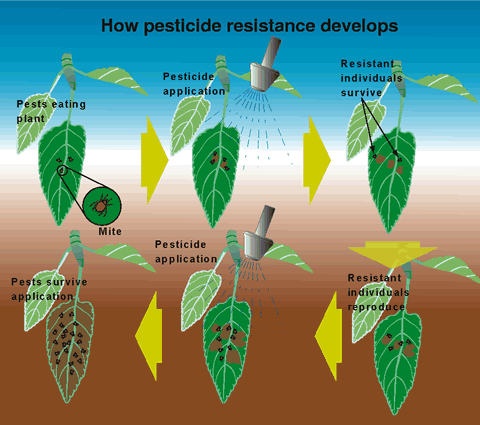Everything about Eco Bed Bug Exterminators Dc
Eco Bed Bug Exterminators Dc - Questions
Table of ContentsEco Bed Bug Exterminators Dc Can Be Fun For EveryoneThe Best Strategy To Use For Eco Bed Bug Exterminators DcSee This Report about Eco Bed Bug Exterminators DcSome Of Eco Bed Bug Exterminators DcHow Eco Bed Bug Exterminators Dc can Save You Time, Stress, and Money.
Due to the fact that pesticides are hazardous, they are also potentially harmful to human beings, animals, other microorganisms, and the atmosphere. Consequently, individuals that utilize chemicals or consistently can be found in call with them should recognize the relative toxicity, possible health results, and preventative steps to reduce direct exposure to the items they use. Risk, or threat, of utilizing pesticides is the potential for injury, or the level of risk associated with using a chemical under an offered collection of problems.
Nonetheless, applicators can reduce or almost get rid of exposure-- and hence reduce threat-- by adhering to the tag guidelines, utilizing personal protective garments and equipment (PPE), and managing the pesticide properly. Even more than 95 percent of all chemical exposures come from facial direct exposure, mainly to the hands and forearms. By putting on a pair of unlined, chemical-resistant handwear covers, this kind of direct exposure can be nearly removed.
The unsafe effects that occur from a solitary exposure by any course of access are called "severe results." The four courses of direct exposure are facial (skin), inhalation (lungs), oral (mouth), and the eyes. Severe poisoning is determined by checking out the dermal poisoning, breathing toxicity, and oral poisoning of guinea pig.
Some Known Details About Eco Bed Bug Exterminators Dc
Severe toxicity is measured as the amount or concentration of a toxicant-- the a.i.-- required to kill half of the pets in a test populace. This action is usually revealed as the LD50 (deadly dose 50) or the LC50 (deadly concentration 50). Additionally, the LD50 and LC50 worths are based upon a solitary dosage and are recorded in milligrams of chemical per kg of body weight (mg/kg) of the guinea pig or in parts per million (ppm).
The reduced the LD50 or LC50 value of a pesticide product, the better its toxicity to human beings and animals. Pesticides with a high LD50 are the least poisonous to human beings if utilized according to the instructions on the product label. The persistent poisoning of a pesticide is determined by subjecting test animals to long-term direct exposure to the energetic component.
The persistent toxicity of a pesticide is harder than intense poisoning to establish with lab analysis. Products are categorized on the basis of their family member severe toxicity (their LD50 or LC50 worths). Chemicals that are classified as extremely toxic (Poisoning Classification I) on the basis of either oral, facial, or breathing poisoning have to have the signal words DANGER and poisonous substance printed in red with a head and crossbones icon plainly displayed on the front panel of the package tag.
The severe (single dose) dental LD50 for pesticide items in this group varies from a trace amount to 50 mg/kg. As an example, exposure of a couple of declines of a product taken orally might be fatal to a 150-pound individual. Some chemical products have just the signal word threat, which informs you absolutely nothing concerning the intense poisoning, just that the product can cause severe eye damages or severe skin irritation
Not known Details About Eco Bed Bug Exterminators Dc
In this classification, the severe oral LD50 arrays from 50 to 500 mg/kg. A teaspoon to an ounce of this material might be deadly to a 150-pound individual (bed bug treatment). Chemical products categorized as either a little hazardous or relatively harmless (Poisoning Classifications III and IV) are required to have the signal word care on the pesticide label

All pesticide poisoning worths, including the LD50, can be found on the item's Product Security Data Sheet (MSDS) - exterminator near me. Chemical tags and MSDS can be acquired from merchants or manufactures. On top of that, most products also have information that can be discovered on the Internet. The signs of chemical poisoning can vary from a read this post here moderate skin inflammation to coma or perhaps fatality.
People likewise differ in their level of sensitivity to different degrees of these chemicals. Some individuals might show no reaction to an exposure that might create extreme illness in others (bed bug spray). Due to possible health and wellness problems, chemical users and handlers have to recognize the typical indicators and signs and symptoms of chemical poisoning. The impacts, or symptoms, of chemical poisoning can be extensively defined as either topical or systemic.
What Does Eco Bed Bug Exterminators Dc Mean?
Dermatitis, or inflammation of the skin, is accepted as the most commonly reported topical effect linked with pesticide direct exposure. Some people tend to cough, hiss, or sneeze when exposed to pesticide sprays.
This symptom generally subsides within a couple of minutes after an individual is removed from the direct exposure to the toxic irritant. Nevertheless, a reaction to a pesticide product that creates somebody not just to sneeze and cough but also to develop serious intense respiratory signs is extra likely to be a true hypersensitivity or allergy.
Systemic impacts are rather various from topical impacts. They frequently take place away from the original point of contact as a result of the pesticide being absorbed right into and dispersed throughout the body. Systemic results commonly consist of nausea, vomiting, exhaustion, migraine, and digestive disorders. In advanced poisoning instances, the individual may experience adjustments in heart price, problem breathing, convulsions, and coma, which can result in death.